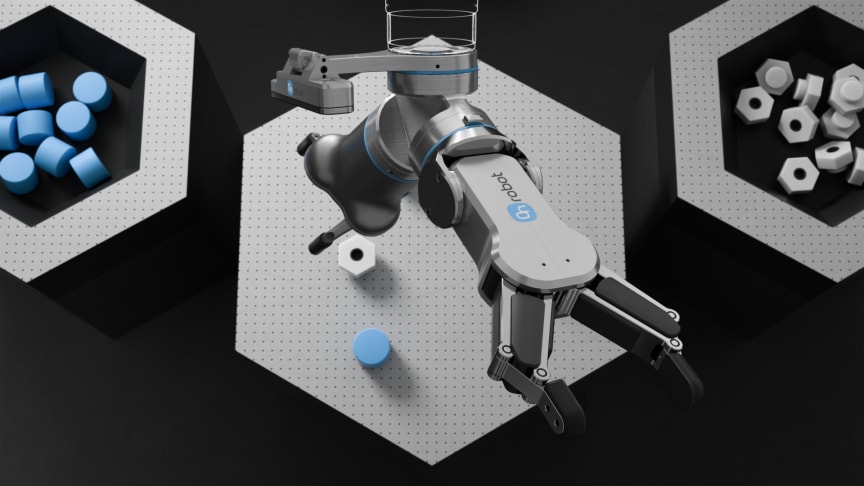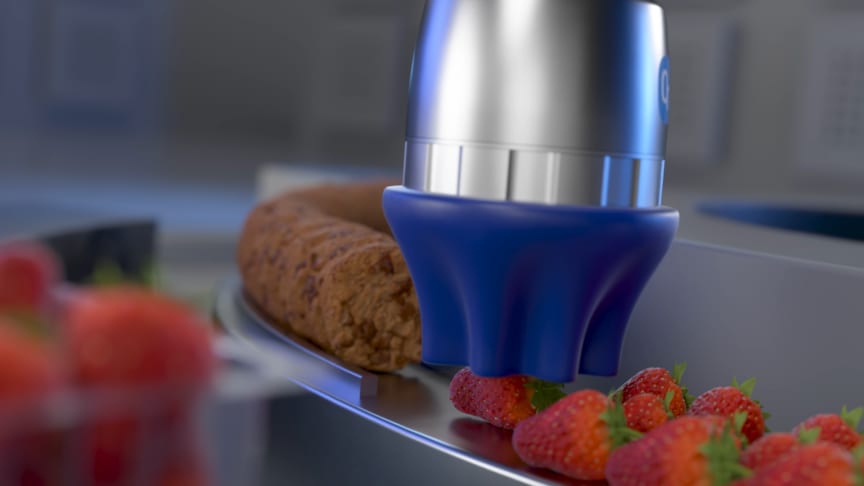Latest trends shaping the future of robotic automation
 Collaborative robots
Collaborative robotsRobotics trends shaping the future:
Human-robot collaboration
Human-robot collaboration remains a prominent trend in robotics. With the advancement of sensors and vision technology, robots can react in real time to changes in their environment, allowing them to work safely with human workers by automatically reducing force or stopping when they sense human proximity. Many types of cooperating applications are now available, such as assembly, machine maintenance, welding, screwing, and more. Such applications can be used by companies regardless of company size. And this makes the automation of small, variable production economically feasible. This is also a very important opportunity for large companies producing customized products and small and medium-sized companies, which make up the vast majority of manufacturers worldwide. Collaborative robot applications offer a new solution for humans, by easing and supporting their work.
Ease of programming
Robot manufacturers continue to strive to create easier programming interfaces. When it comes to robots suitable to serve manufacturing processes characterized by short production runs and diversified tasks, ease of programming is a determining factor. This fact is evident in the cases of mobile robots and collaborative applications, but holds true concerning traditional industrial robots as well. Demonstration programming, when the worker leads the robot through the desired movements and enters the force-torque values in the user interface is becoming more common. The interfaces are becoming more and more intuitive, e.g. by using natural language. As a result, employees no longer need programming skills to perform tasks. Robot manufacturers also deliver pre-programmed applications that can be easily customized to customer-specific parameters.
Smart grippers
Due to the development of sensors and vision technology, end effectors are becoming more responsive. These allow the grippers to recognize the materials and apply the appropriate force to manipulate the part or piece of material. The combination of sensors and vision technologies also allows end effectors to detect and adjust to human presence, distinguishing between the employee and a new piece of material and allow them to perform the appropriate action, e.g. adjusting force and speed or stopping when a worker’s hand appears instead of the expected part.
Ease of integration / plug and play
Manufacturers of robots and suppliers of end effectors are striving for increasing compatibility within the robot and across manufacturing production systems. For example with self-identifying software within many end effectors, which enables automatically connection for the controller. The integration of robotic solutions in machine tools also is more and more widespread, which allows the execution of programming modifications through a single operator control unit. Robots are becoming easier to integrate into manufacturing systems, despite competing standards hampering the speed of Industry 4.0 / intelligent factory implementation
Cloud robotics and Robot-as-a-Service (RaaS)
Advances in applied sciences bring forward new solutions in robotics as well. Cutting edge technologies, such as the remote (‘cloud’) storage of robot performance data enable manufacturers to offer data driven services to their customers. These services include predictive maintenance, which can save enormous machine downtime costs, machine learning methods, that analyse cloud-based data from multiple robots performing the same process in order to optimize robot performance, or cloud connectivity, which allows leased robots to enter market (Robot-as-a-Service). This business model holds several advantages for SMEs as it does not require fixed capital, only fixed costs, it offers automatic upgrades and there is no need for specially qualified robot operators.
Self-optimization
Robots are able to react and respond to external conditions in real-time by adjusting their parameters where needed, which lead to a reduced defect rate and improved product quality. In addition, vision systems and sensors help the robot detect when a part is out of alignment. The robots are receiving and processing various signals during the course of their work, such as feedback to ‘sense’ whether the pressure of the end-effector needs to be increased or decreased during polishing, they conduct spectral analysis to detect welding faults, in order to optimize their course of action. When the robot is connected digitally to other machines within the production process, the optimization of the entire process can be achieved. These developments promise substantial cost reductions for manufacturers in environments where the fulfilling the highest quality standards is essential. (World Robotics 2020 Report)
Through the eyes of a robotic expert
The rise of robotics is driving the market for more and more solutions. We can see robots in areas to perform tasks that would have been unthinkable even a few years ago. Such a new area is e.g. one of the youngest - EOAT - market, which is constantly growing, providing a wide range of tooling, grippers and sensors available for a variety of applications such as palletizing, machine tending, material handling and others. The market leader of the EOAT market (OnRobot) launched for eg. several new products for collaborative applications in 2020 - planning further expansion in 2021 - showing a great example of the developing market. Their unique solutions help manufacturers gain full advantage of automation, like the OnRobot Eyes with 2.5D vision, which was one of the fruits of the Hungarian RnD team’s work.
But there are plenty of other areas to be exemplified, from mobile robots with AI features to humanoid robots, but even new business models that are born to support the sales of robotics solutions, like RaaS model mentioned above.
OnRobot Eye
The pandemic showed the necessity of robotics
Although the coronavirus in 2020 has pushed back many sectors, which could have an impact on future economic performance, the pandemic could not stop technological developments in robotics to proceed rapidly. The robotics trends listed above can help companies to recover from the crisis and gain a competitive advantage meanwhile reduce operational risks.
In fact, the challenges posed and emphasized by the impact of the pandemic, such as unplanned shutdowns, risk of infection, and the need to rapidly realign or completely reorganize production, have shown that the heightened flexibility, versatility, reliability and predictability that automation is more than capable to provide are more timely and necessary for manufacturing companies than ever.
“At OnRobot we believe that continuous development of the industry goes hand in hand with implementing automation solutions. The time to automate is now as businesses, regardless of size could benefit from more robotic solutions than ever before, and this would allow them to be globally competitive and approach the top countries adapting automation.” – said Vikram Kumar, General Manager EMEA at OnRobot.
About OnRobot
OnRobot delivers a full line of innovative plug-and-produce solutions for collaborative applications. Our electric grippers, force/torque sensors, vacuum grippers, award-winning Gecko technology and tool changers help manufacturers gain the full advantages of automation, including ease of use, cost-effectiveness, and safety alongside human workers. The combination of offerings makes it quicker and simpler to automate tasks such as packaging, quality control, material handling, machine tending, palletizing, assembly and surface finishing.





